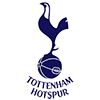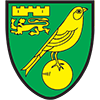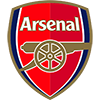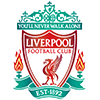One thing I'll be looking at in this column is which players are getting the opportunities and the touches but haven't been delivering the expected goals and assists that should result in fantasy production. On the flip side, I'll also be looking at the players that are over-producing relative to their opportunities and trying to predict which players are due to return to "normal" production.
Establishing Theory
Before we delve into the analysis, I want to examine the correlation between touches and goals and assists. The first step to consider is that the more touches a player gets in the final third, the more shots that player can expect to get off. This intuitive thought can be quantified by examining Figure 1 below, as it indicates that the relationship between shots and touches in the final third has a 35 percent correlation. The data includes players from all positions and touches in all situations, and not just those that get good shots. Regardless, there is a clear trend that players who get more touches can take more shots.
While shots are a good metric to base your analysis on, what we really want are shots that turn to goals. In order to correctly examine whether shots are directly translatable to more goals, let's examine Figure 2.
Figure 2 – Data from 2011/12 to current season. Shows Goals vs Shots through the entire season.
The correlation between goals and shots is extremely high: 74 percent, as indicated by the R2 coefficient in the table. Most of the goals scored are by players who take the most number of shots. Of course, this says nothing to efficiency, but it does indicate that when a player takes the lion's share of his team's shots, you can expect that player to get the lion's share of his team's goals.
Another important statistic to consider for fantasy sports is assists. Most goals come with assists in the majority of fantasy formats. An assist is defined by OPTA (the leading soccer statistics provider around the world) as "the final pass or pass-cum-shot leading to the recipient of the ball scoring a goal." Assists also carry some heavy fantasy output, as they are the second-highest scoring category in most fantasy soccer formats. Predicting assists is tough, however, we can come pretty close to predicting them with the necessary data. The most important stat to consider is "chances created," which is closely correlated to a player's touches in the final third as seen in Figure 3:
Figure 3 – Data from 2011/12 to present shows Chances Created vs Touches -Final Third.
You'll notice that this chart shows a correlation coefficient R2 of 84 percent, showing that chances created are one of the most predictable statistics we can rely on. But how reliable is it to correlate chances created to assists? Figure 4 can help us answer that question:
Figure 4 - Data from 2011/12 to present shows Assists vs Chances Created
A 67 percent correlation coefficient shows that assists and chances created often go hand-in-hand. We can absolutely use chances created to determine if a player has been getting opportunities to deliver assists and he's been getting unlucky, or even the opposite can be proven. If a player is getting a lot of assists off few chances created, then maybe he is getting lucky. However, the big takeaway is that touches in the final third are the common statistic in all of this analysis.
Putting It All Together
When looking at all this, we can use it to analyze which players are performing well and delivering results, and which ones are performing well, but not producing.
The table below shows the top-15 players in the league in terms of touches in the final third this season, along with some other key stats:
| Name | Team | Assists | Chances Created | Crosses | Goals | Shots | Touches | Touches Final Third |
|---|---|---|---|---|---|---|---|---|
| Alexis Sanchez | 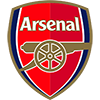 | 0 | 15 | 11 | 6 | 45 | 653 | 391 |
| Mesut Ozil |  | 6 | 37 | 40 | 1 | 12 | 656 | 366 |
| Eden Hazard | 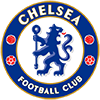 | 2 | 28 | 13 | 1 | 12 | 640 | 364 |
| Jesus Navas |  | 3 | 20 | 57 | 0 | 14 | 543 | 352 |
| Dimitri Payet |  | 3 | 38 | 84 | 5 | 17 | 662 | 329 |
| Aaron Ramsey |  | 0 | 14 | 13 | 1 | 27 | 779 | 323 |
| Santi Cazorla |  | 2 | 29 | 41 | 0 | 20 | 1035 | 318 |
| Memphis Depay | 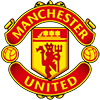 | 0 | 4 | 44 | 1 | 25 | 475 | 301 |
| Cesc Fabregas |  | 1 | 17 | 38 | 0 | 14 | 923 | 292 |
| Ross Barkley |  | 3 | 16 | 50 | 2 | 28 | 648 | 290 |
| Raheem Sterling |  | 1 | 15 | 15 | 4 | 18 | 460 | 287 |
| Jamie Vardy |  | 1 | 13 | 16 | 9 | 38 | 412 | 285 |
| Phillip Coutinho | 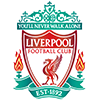 | 2 | 8 | 15 | 1 | 39 | 551 | 285 |
| Graziano Pelle |  | 3 | 9 | 6 | 5 | 38 | 523 | 275 |
| James Milner |  | 2 | 20 | 51 | 1 | 14 | 699 | 275 |





